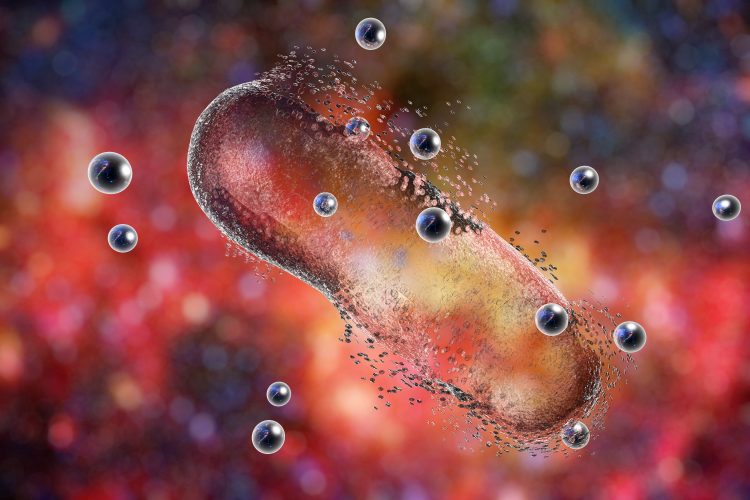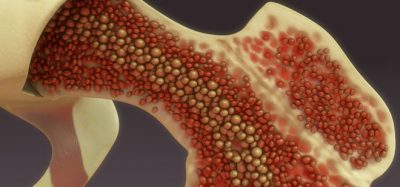Turning up the heat: simple temperature change makes versatile vaccine nanoparticles
Posted: 11 August 2025 | Drug Target Review | No comments yet
University of Chicago researchers have developed a scalable nanoparticle platform that self-assembles with just a temperature change – enabling safe, solvent-free delivery of proteins and RNA for vaccines and therapies.


In a discovery that could broaden access to next-generation biologic medicines and vaccines, researchers at the University of Chicago Pritzker School of Molecular Engineering (UChicago PME) have engineered polymer-based nanoparticles that form with a temperature change.
The new nanoparticles, described in Nature Biomedical Engineering, self-assemble in water at room temperature. Due to these gentle conditions, they can deliver proteins that are unstable in many existing nanoparticle formulations.
“What excites me about this platform is its simplicity and versatility. By simply warming a sample from fridge temperature to room temperature, we can reliably make nanoparticles that are ready to deliver a wide variety of biological drugs,” said co-senior author Stuart Rowan, the Barry L MacLean Professor for Molecular Engineering Innovation and Enterprise at UChicago PME.
Biomarkers aren’t just supporting drug discovery – they’re driving it
FREE market report
From smarter trials to faster insights, this report unpacks the science, strategy and real-world impact behind the next generation of precision therapies.
What you’ll unlock:
- How biomarkers are guiding dose selection and early efficacy decisions in complex trials
- Why multi-omics, liquid biopsy and digital tools are redefining the discovery process
- What makes lab data regulatory-ready and why alignment matters from day one
Explore how biomarkers are shaping early drug development
Access the full report – it’s free!
From problem to platform
Nanoparticles are key to protecting delicate drugs like RNA and proteins from being degraded in the body before they reach the right cells. For example, lipid nanoparticles (LNPs) made COVID-19 mRNA vaccines possible. However, LNPs rely on alcohol-based solvents and sensitive manufacturing steps – making them less suitable for protein delivery.
“We wanted to make a delivery system that could work for both RNA and protein therapies – because right now, most platforms are specialised for just one,” said first author Samir Hossainy, a UChicago PME graduate student. “We also wanted to make it scalable, without needing toxic solvents or complicated microfluidics.”
We wanted to make a delivery system that could work for both RNA and protein therapies – because right now, most platforms are specialised for just one
Hossainy theorised that polymer-based nanoparticles could offer a more robust and customisable alternative. He outlined that the immune system would only respond to particles with certain sizes, shapes and charges – and then used chemical tools to begin designing new nanoparticles from scratch.
After fine-tuning more than a dozen different materials, he found one that worked. In cold water, the polymer – and any desired protein – remained dissolved. But when heated to room temperature, the polymer self-assembled into uniformly sized nanoparticles surrounding the protein molecules.
“Our particle size and morphology are dictated only by the chemistry of the polymers that I designed from the bottom up,” explained Hossainy. “We don’t have to worry about different particle sizes forming, which is a challenge with a lot of today’s nanoparticles.”
Carrying versatile cargo
To put the new particles – known as polymersomes – to the test, Hossainy collaborated with colleagues in Rowan’s lab and with former UChicago PME Professor Jeffrey Hubbell. First, they showed that the particles can encapsulate more than 75 percent of protein and nearly 100 percent of short interfering RNA (siRNA) cargo. This is far higher than most current systems and they can be freeze-dried and stored without refrigeration.
In the context of vaccination, Hossainy and his collaborators found that the particles could effectively carry a protein. When injected into mice, this triggered the animals’ immune systems to generate long-lasting antibodies against that protein. Another experiment showed that the nanoparticles could also carry proteins designed to prevent an immune response in the context of allergic asthma. A third demonstrated that injecting them into tumours could block cancer-related genes and suppress tumour growth in mice.
“The exciting thing is that we didn’t need to tailor a different system for each use case,” said Hossainy. “This one formulation worked for everything we tried – proteins, RNA, immune activation, immune suppression and direct tumour targeting.”
A scalable solution for worldwide vaccines
One of the biggest advantages of these new polymersomes over current LNPs is the potential for low-tech, decentralised production. Hossainy says he imagines being able to ship freeze-dried formulations of the nanoparticles to anywhere in the world. When they need to be used, they can be mixed in cold water, warmed up and will be ready to deliver to patients.
“Being able to store these dry drastically improves the stability of the RNA or protein,” said Hossainy.
The group is continuing to work on fine-tuning the particles to carry more types of cargo, including messenger RNA like that used in the COVID-19 vaccines, which are generally much larger than the siRNA used in the current trial. They also plan to collaborate on pre-clinical trials to apply the new nanoparticles to real-world vaccine and drug delivery challenges.
Related topics
Biologics, Cancer research, Drug Delivery, Drug Development, Nanomedicine, Nanoparticles, Polymers, Translational Science, Vaccine development
Related conditions
autoimmune diseases, Cancer
Related organisations
the University of Chicago Pritzker School of Molecular Engineering (UChicago PME)








